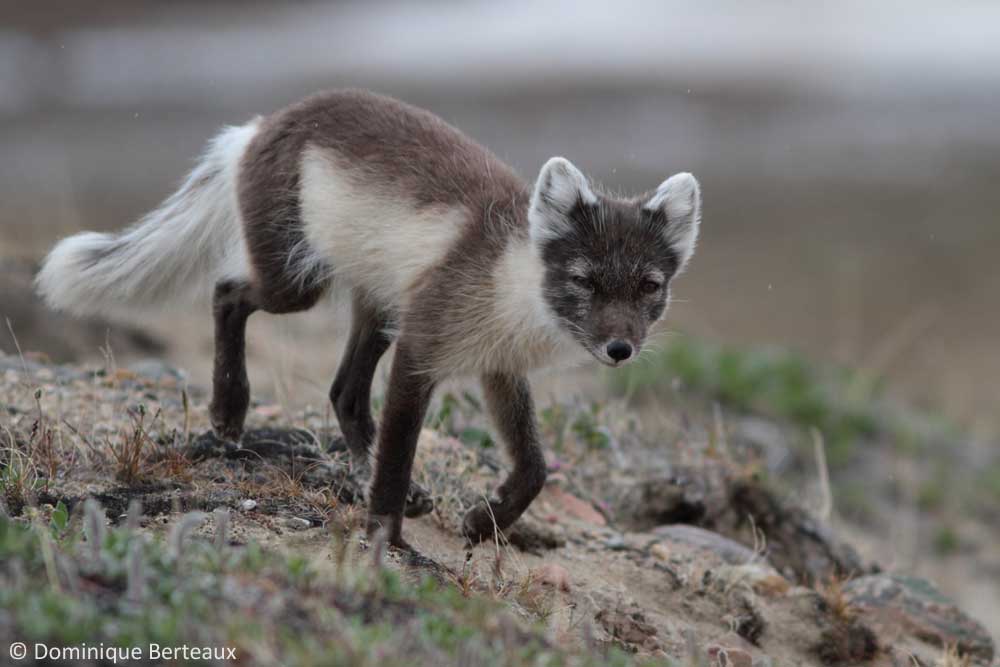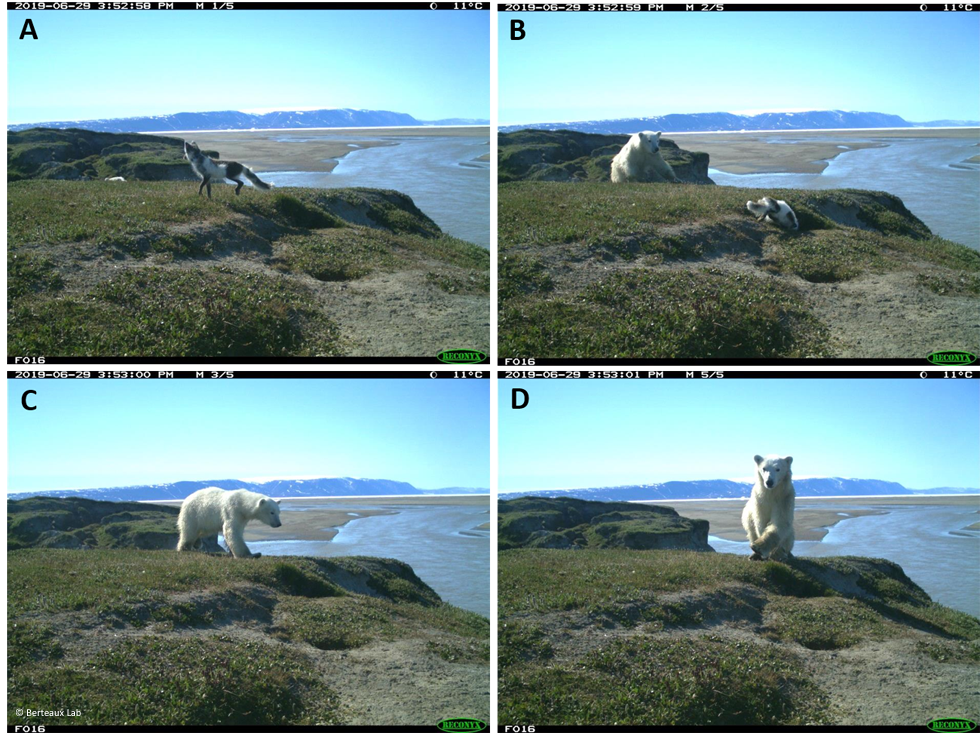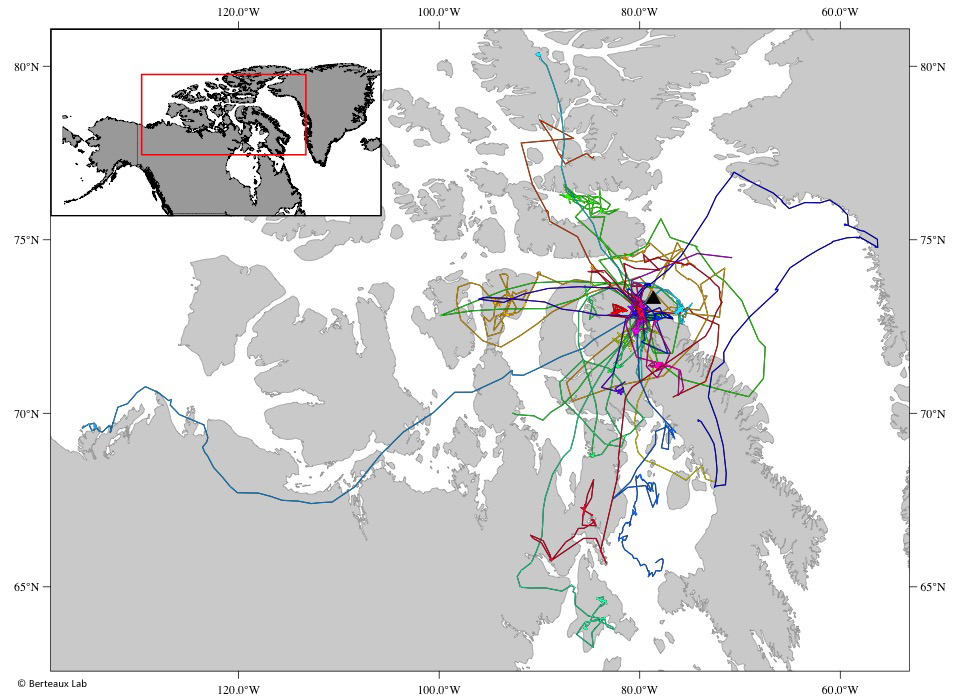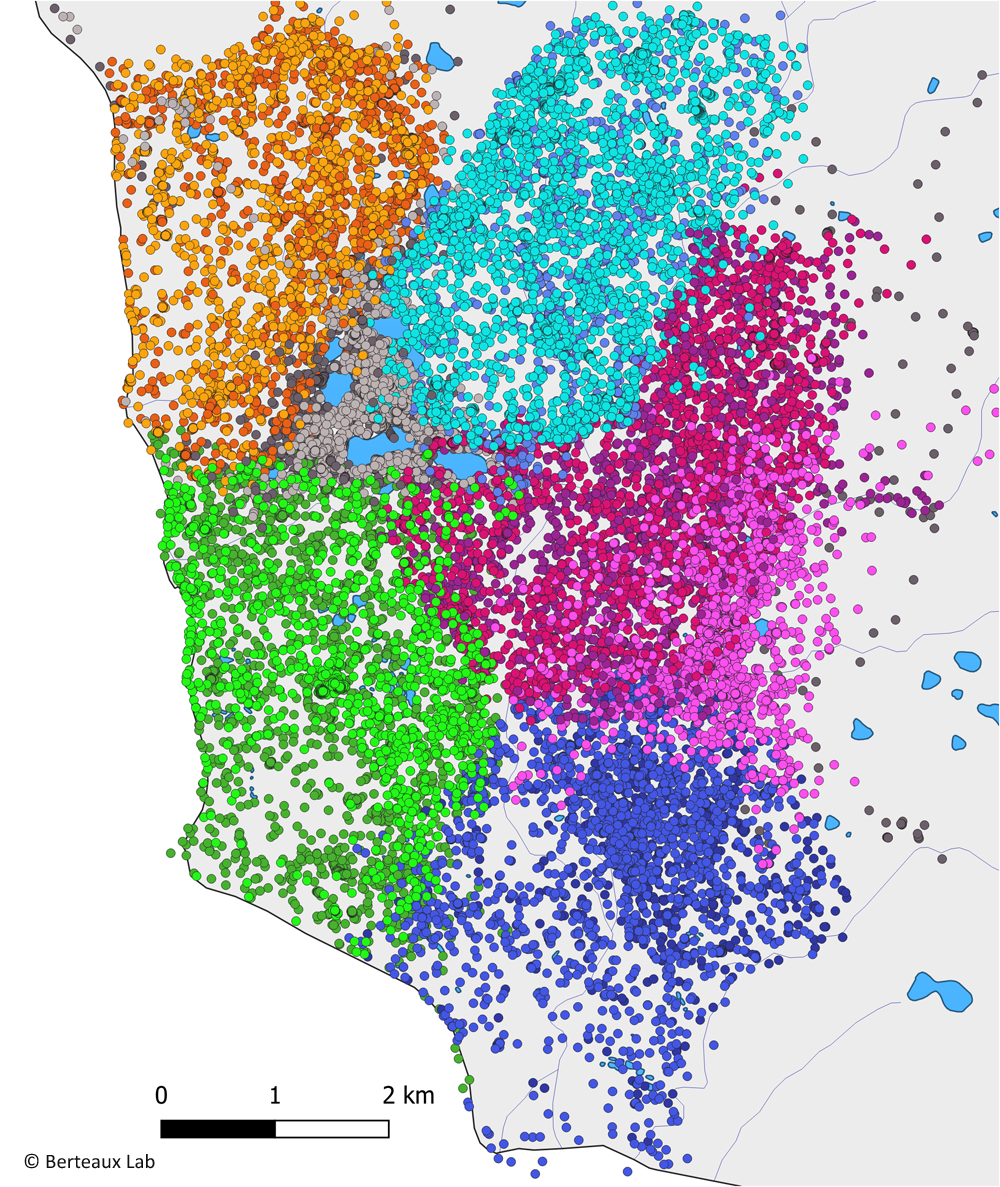 |
The arctic fox is the main predator found on Bylot Island and their favourite prey is a small rodent called lemmings. However, foxes also prey on other species like goose eggs and goslings, other migratory birds, and seals or seal carcasses found on the sea ice. Lemming populations go through phases of really high to really low densities, every 3-5 years (see Lemmings), therefore the reproduction of foxes varies through time. The same is true with red foxes, but they are very rare on Bylot Island.
Starting in 1993, known den sites in the south plain of Bylot Island were opportunistically visited to assess the presence of cubs. Starting from 2003, the monitoring became systematic. An extensive search of dens was conducted and covered an area of approximately 600 km2 going from the Qarlikturvik Valley to Pointe Dufour. Since then, over 110 dens are visited twice every summer, once in mid-May and once at the end of June. All visits are made within a week to avoid counting the same litter twice due to relocation of cubs during the rearing period. Only dens where cubs are seen or heard are categorized as breeding dens (natal or rearing den). Since 2007, camera traps are installed on occupied dens to complement field observations. The full dataset of our den monitoring on Bylot Island is available on NordicanaD. To learn more about our field methods, please refer to our technical manual on foxes.
Foxes can move far away from Bylot in winter
In the last 10 years we have used sophisticated technologies to study the movements of arctic foxes. For example, we have fitted some foxes with small collars (called Argos collars) that communicate with satellites, allowing us to know where foxes travel in winter. This has led to surprising discoveries. In particular, we have found that arctic foxes living on Bylot Island can move in winter throughout Nunavut and even beyond, to Greenland, Quebec and the Yukon. A few of them come back to the same den the following year, but many never come back, as if they had been expulsed from their territory by another, stronger fox.
When moving throughout Nunavut, foxes travel on land and ice. They can travel 90 km during a single day, and probably more. This is remarkable for such a small animal. The map shows many of these travels. Usually all the foxes born in a given year leave the family territory in the fall. However, adults tend to stick to their territory and rarely travel far away. But they do explore the sea ice around Bylot Island in order to find food such as seal pups or seal carcasses. We have found that many foxes, perhaps 10, 15 or more, sometimes explore the same locations at the same time on the sea ice. We call these locations “hot spots”. Foxes probably detect from a long distance that there is food somewhere, and they travel to this place. Foxes stay for a few days at a hot spot, and then come back to their territory.
Inuit hunters have observed many of the behaviours described above, and it is interesting that modern technology complements this traditional knowledge. For example, hunters travel on the sea ice in winter and observe behaviours that scientists usually do not see. Conversely, satellite collars allow the tracking of the same fox during many months, which is impossible for a hunter. Therefore, exchange of knowledge between hunters and scientists is useful to better understand wildlife (also see Inuit knowledge).
Foxes use the tundra very intensively during the summer
Since 2018, we have started to use even more sophisticated satellite collars. These new collars are also very small and they contain mini-solar panels allowing batteries to charge from the sun in summer. Collars contain a tiny GPS to register all the fox movements. For example, we can know every 30 seconds where a fox is located. This allows us to map the territories of foxes with a great precision. The map shows the locations of 13 foxes distributed on 7 territories. Every dot is a fox location and different foxes have different colours. Territories are clearly visible. For example, the northwest territory on the map is occupied by a male (dark orange dots) and a female (light orange dots). Foxes try to never go into the territory of a neighbour, although this can occasionally occur. Adjacent territories are of rather similar size, again with exceptions. Note for example the very small territory occupied by the foxes represented by light grey and dark grey dots. These foxes seem to be squeezed between foxes having large territories.
A remarkable finding from this research is that the average daily distances covered by foxes are in the range of 70 km, with maximum values of 85 km in a single day. This is equivalent to two marathons. Can you imagine running every day one marathon, and some days even two marathons? This finding has many implications for our understanding of the ecology of the tundra. For example, it must be difficult for a bird to nest without being detected by a fox. We will investigate closely these predator-prey relationships during the coming years.
Surprising observations
Since we use camera traps to study foxes at their dens with minimal disturbance, we sometimes see facts of the natural world that few humans have the chance to observe. For example, the picture series below shows a polar bear chasing an arctic fox at its den. On the first picture (A), the fox seems to be on its guard because of some danger. If you look carefully in the direction investigated by the fox, you will see the top of a polar bear’s head. Although the polar bear seems to be hiding from the arctic fox, the fox has detected the bear. On picture (B) the bear jumps out of its hiding spot to chase the fox. The fox runs immediately to its den. Pictures (C) and (D) show the bear investigating the den’s hole where the fox found a safe refuge. This series of pictures demonstrates that bears can hunt foxes in the tundra, and that a den can save the life of a fox. We have collected millions of such pictures throughout the years, and these documents constitute a formidable archive to better understand animal behaviour in the arctic tundra.
 |
| Greater snow goose | Lemmings |


